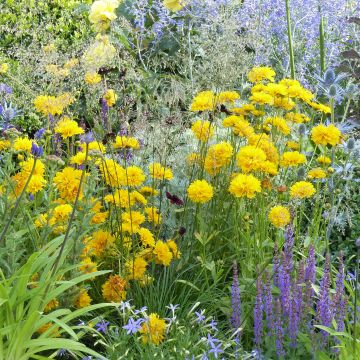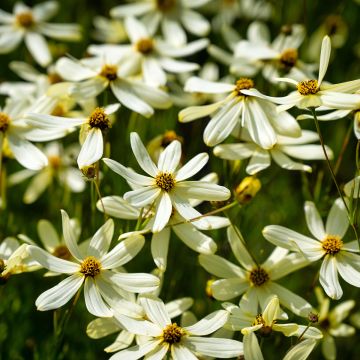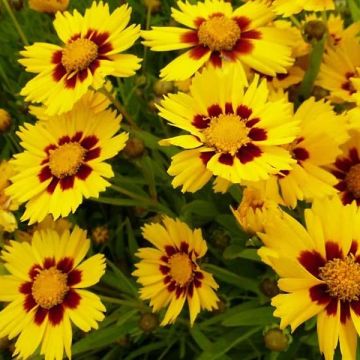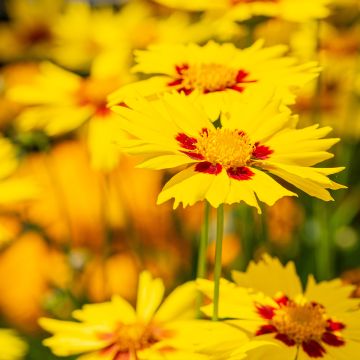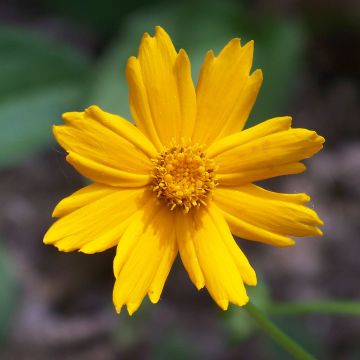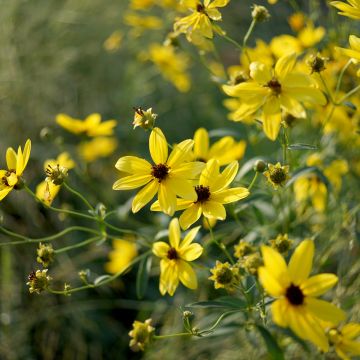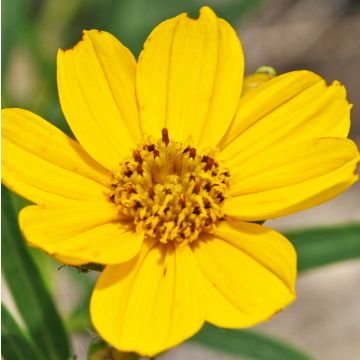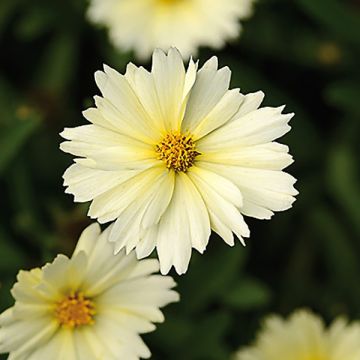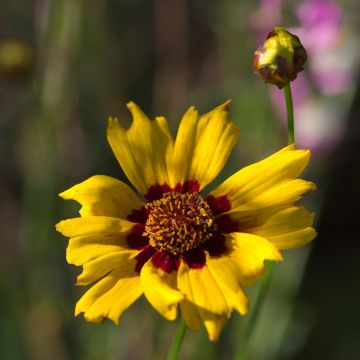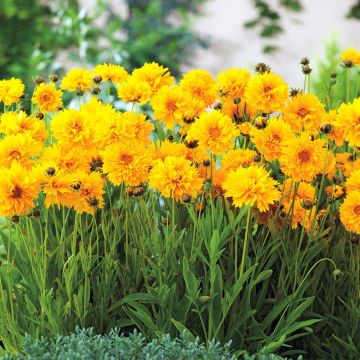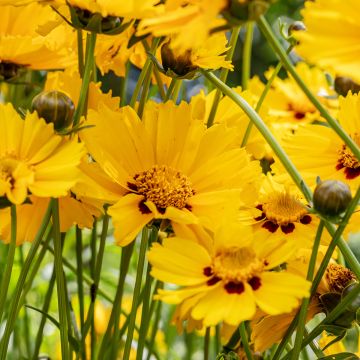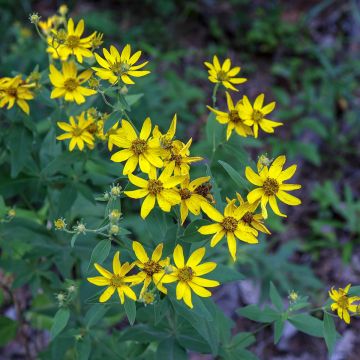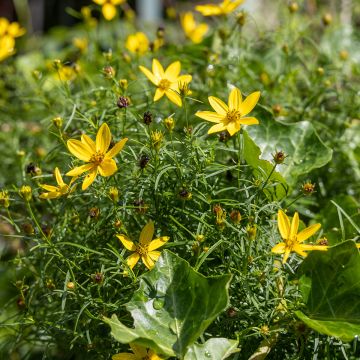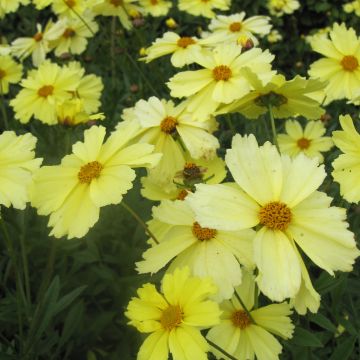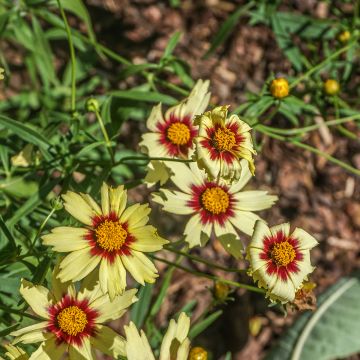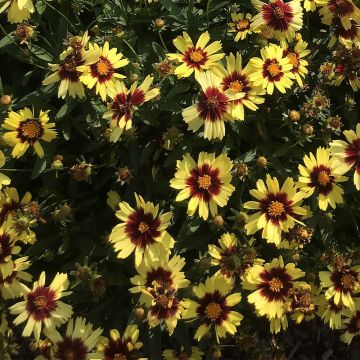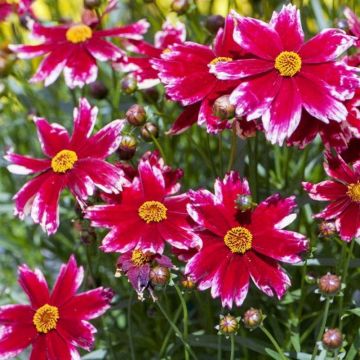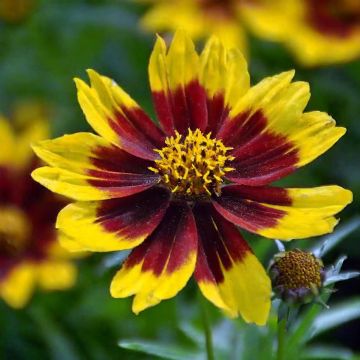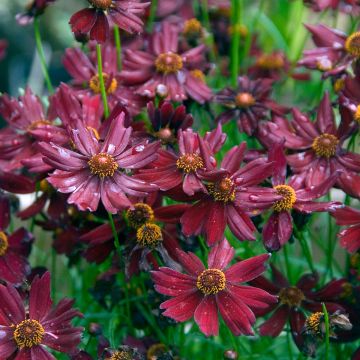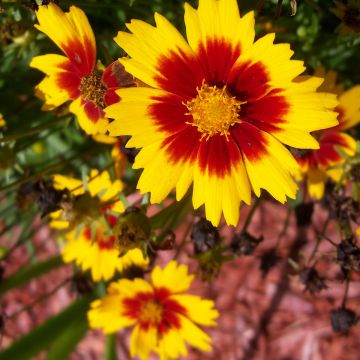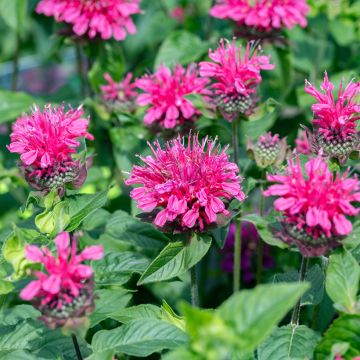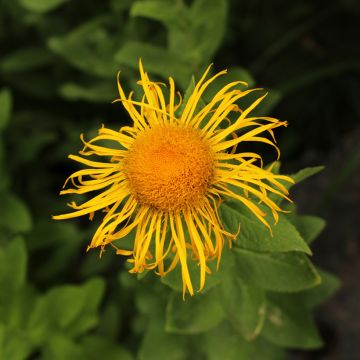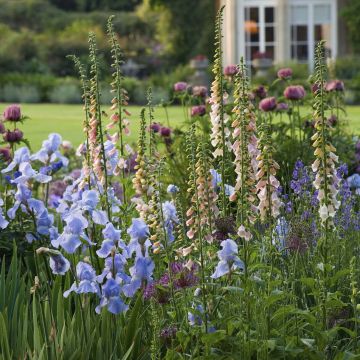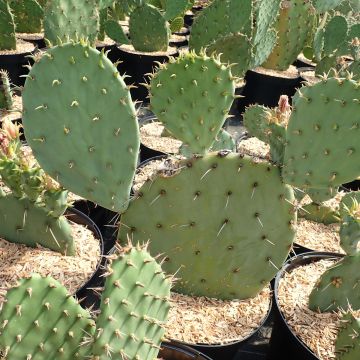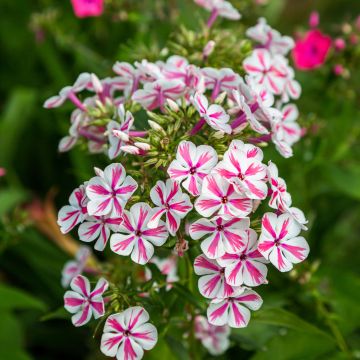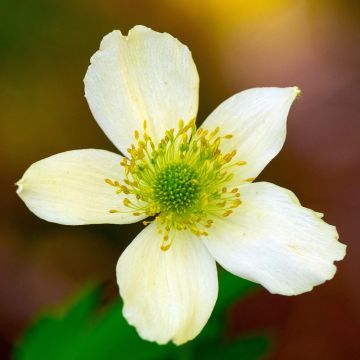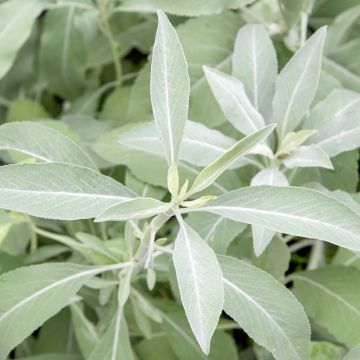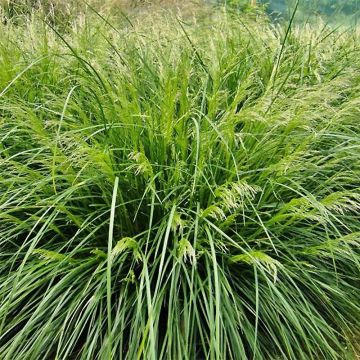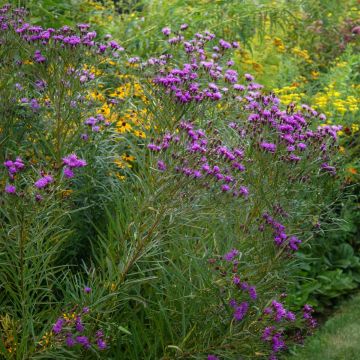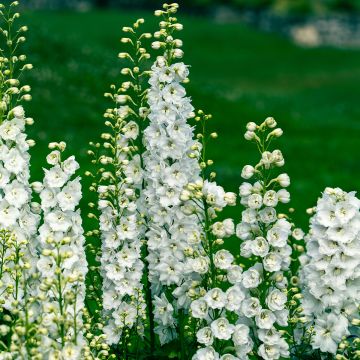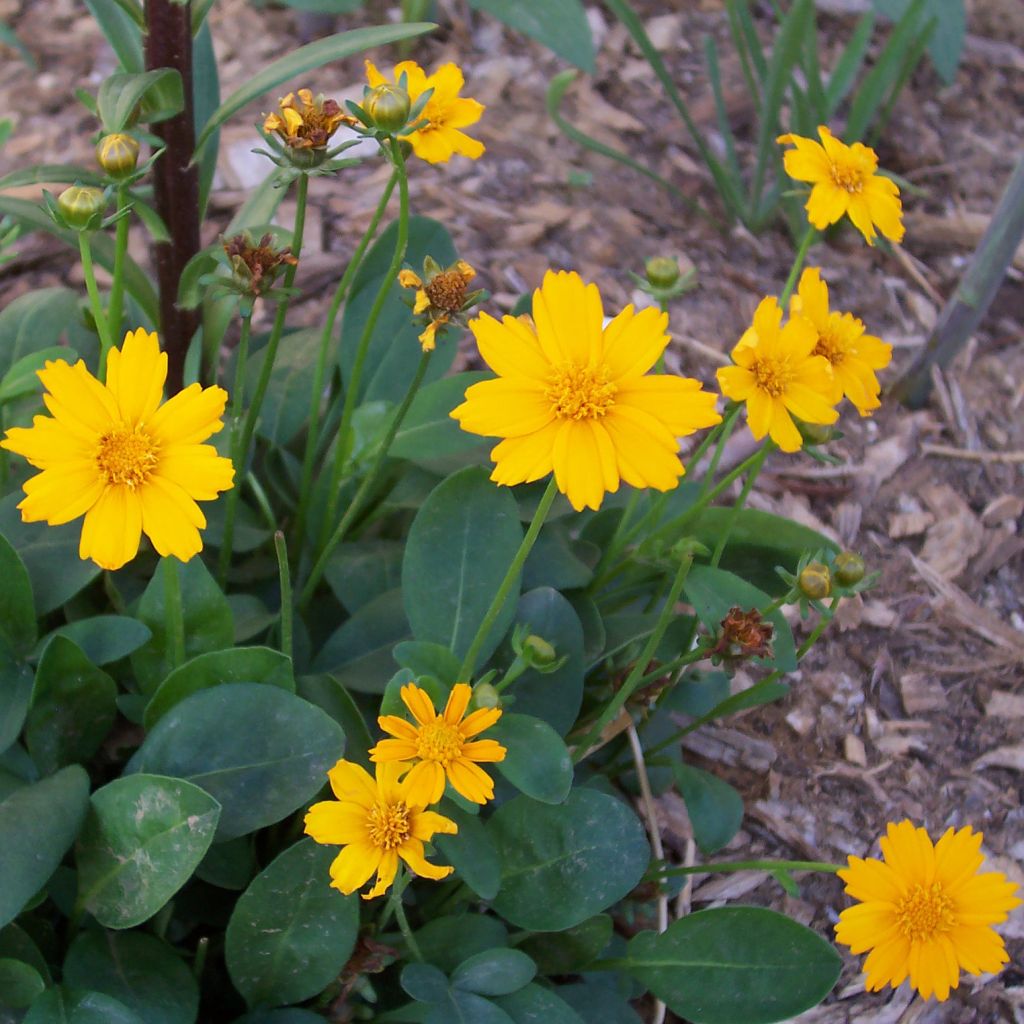

Coreopsis auriculata Elfin Gold
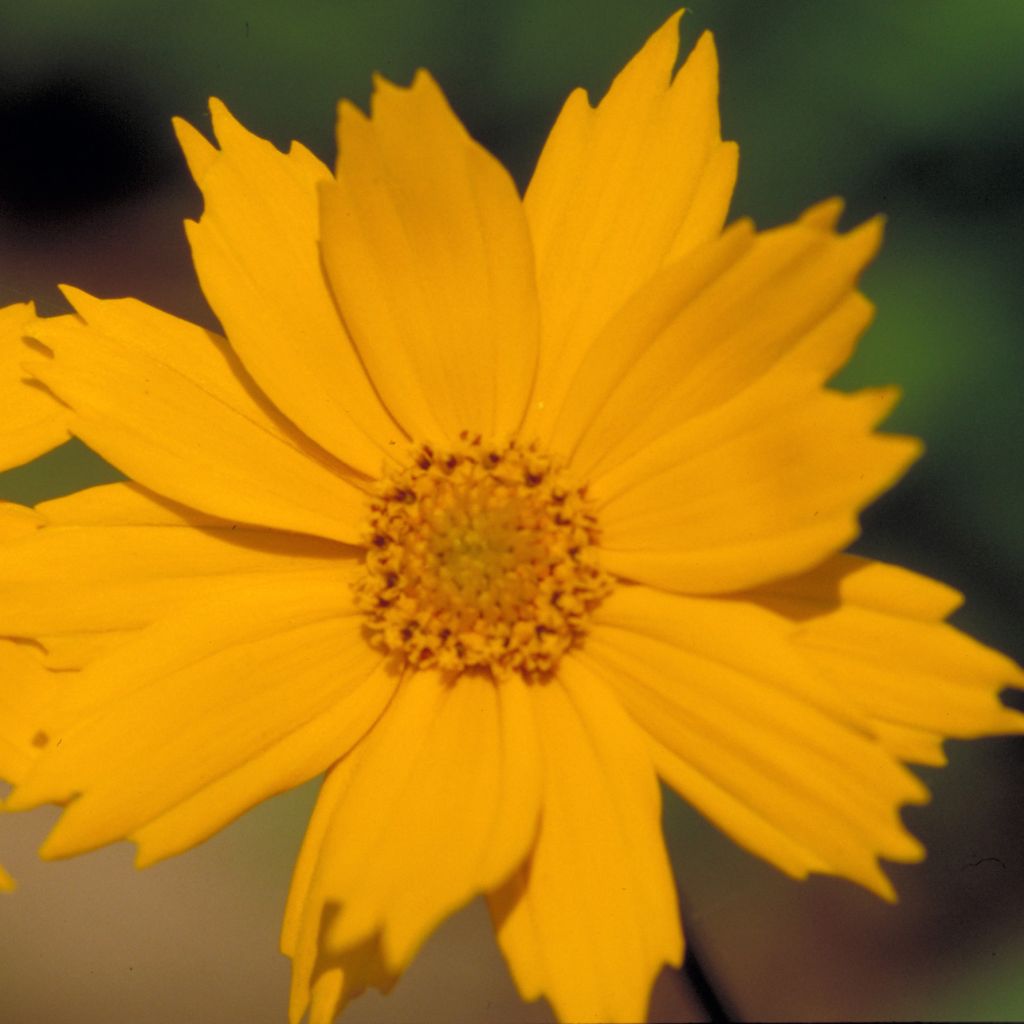

Coreopsis auriculata Elfin Gold
Coreopsis auriculata Elfin Gold
Coreopsis auriculata nana Elfin Gold
Dwarf Ear-leaved Tickseed, Ear-leaved tickseed
Pretty young plant
Florence, 02/04/2020
Why not try an alternative variety in stock?
View all →This plant carries a 12 months recovery warranty
More information
We guarantee the quality of our plants for a full growing cycle, and will replace at our expense any plant that fails to recover under normal climatic and planting conditions.
From €5.90 for pickup delivery and €6.90 for home delivery
Express home delivery from €8.90.
Does this plant fit my garden?
Set up your Plantfit profile →
Description
The Coreopsis auriculata f.nana Elfin Gold is a small, compact, hardy, and floriferous perennial. It offers an abundance of small, bright yellow heads throughout the summer, except during periods of intense heat, where butterflies gather. This flowering contrasts beautifully with its tough, glossy, dark green leaves. Its lifespan is relatively brief, but it spreads and regenerates thanks to a stoloniferous base. This plant is a generous and undemanding non-native ground cover that easily naturalises in a rock garden or on a slope in well-drained, moist soil and full sun.
The Coreopsis auriculata, or auriculate coreopsis, is a short-lived perennial belonging to the Aster family, like sunflowers and asters. It gets its name from a morphological characteristic of its leaves, which have lobes resembling ears at the base. This hardy plant is native to the southeastern and central-eastern United States, from eastern Louisiana to Florida, Kentucky, Maryland, and West Virginia. Its origins mean it is known for its resistance to humid heat and tolerance to drought.
The 'Elfin Gold' variety, derived from the 'Nana' form, stands out for its compact habit and reduced pruning, reaching a height of no more than 15 cm (6in). This plant blooms abundantly from early summer, but the flowering slows down in case of intense heat and prolonged drought, only to pick up again in September with the return of rain or thorough watering. It produces wide, warm and bright yellow daisy-like flowers, about 4 cm (2in) in size, carried by slender stems. The foliage is composed of glossy dark green, lanceolate leaves gathered at the base. After flowering, this plant develops short, non-trailing rooted stems that allow it to spread in large colonies, thanks to nodes that root upon contact with the ground.
Perennial coreopsis plants dislike winter humidity and heavy soils. These plants require full sun, even scorching, to flower well. They prefer light, porous, gravelly or sandy soil that is always well-drained. They are rewarding plants that require little maintenance. The Coreopsis auriculata 'Elfin Gold' is a small perennial with multiple uses. It will thrive in a rock garden, on a slope with wallflowers, Damask nigellas, and wild flax, or in an herbaceous border alongside Teucrium chamaedrys or x lucidrys, thyme, santolines, or poppies. For a beautiful, water-efficient summer display, whether in the ground or a large pot, it can be paired with Calamintha glandulosa and Nepeta 'Dawn to dusk'. This ground cover elegantly borders pathways while limiting weed growth reducing maintenance.
Report an error about the product description
Coreopsis auriculata Elfin Gold in pictures
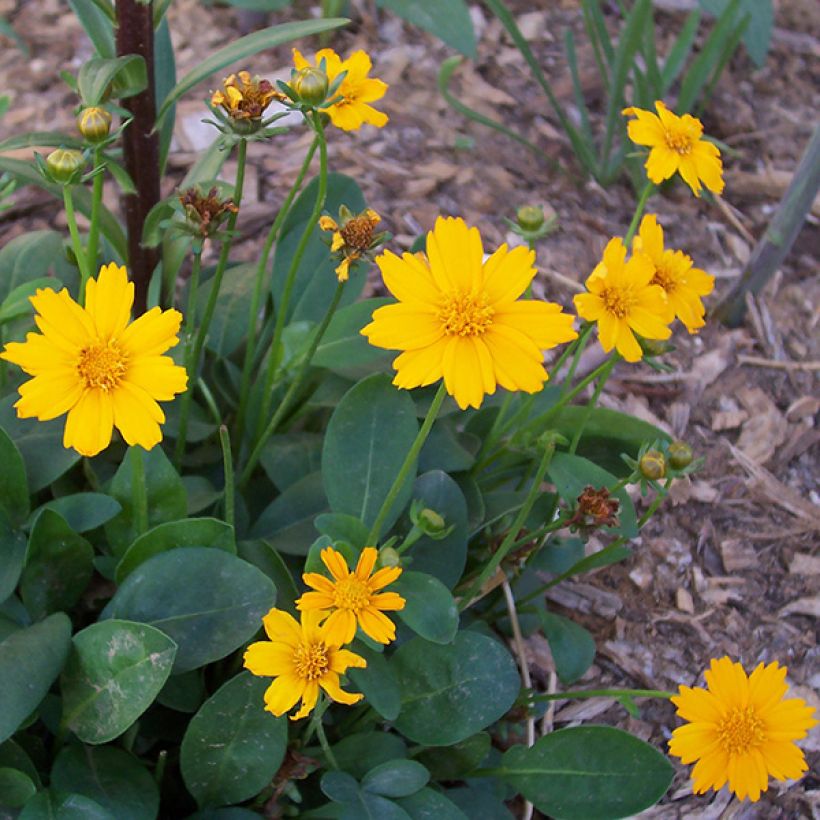

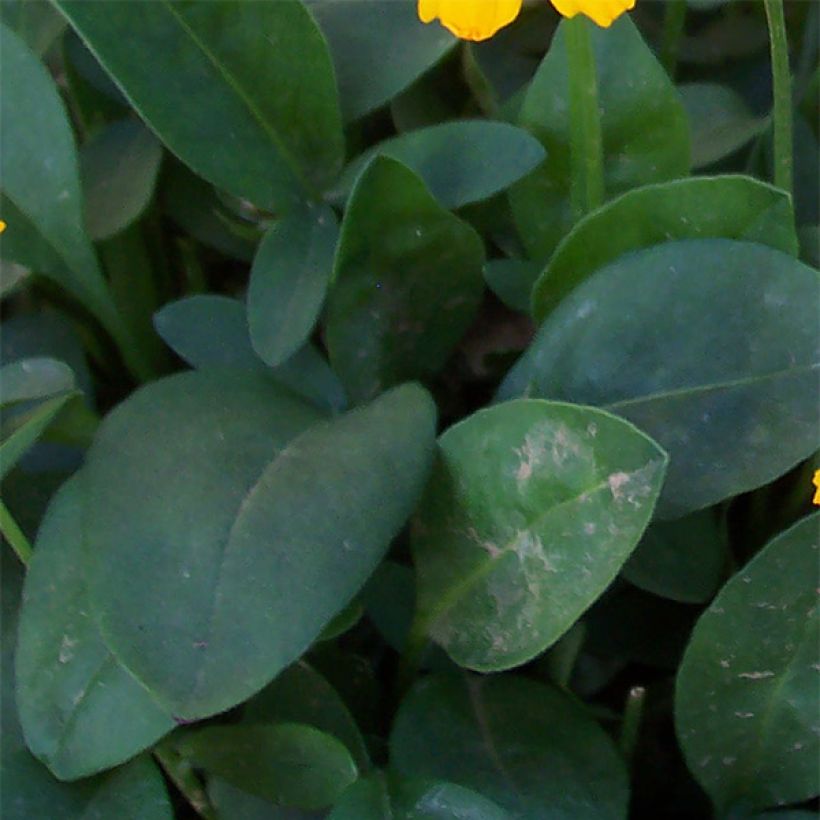

Flowering
Foliage
Plant habit
Botanical data
Coreopsis
auriculata nana
Elfin Gold
Asteraceae
Dwarf Ear-leaved Tickseed, Ear-leaved tickseed
Cultivar or hybrid
Other Coreopsis - Tickseed
Planting and care
Coreopsis auriculata is a plant that lives for many years. It needs a well-drained soil that is sandy or rocky, and it needs to be in the sun. If the soil is heavy and damp, it will behave like an annual plant and die quickly. To prevent this, the plant should be divided every three years. It is best to trim the foliage in September to strengthen the base before winter.
Perennial coreopsis is sensitive to humidity in the winter and heavy soils. They need to be in full sun to flower well. They prefer a light, porous, gravelly or sandy soil that is always well-drained, slightly acidic, and not too dry. They adapt well to soil that is rich in humus and moist as long as the drainage is perfect. If the conditions are good, they will flower and live for a long time. To make sure they keep flowering, it is best to remove faded flowers, particularly at the end of August. These plants are low-maintenance and very rewarding.
Planting period
Intended location
Care
-
, onOrder confirmed
Reply from on Promesse de fleurs
Summer flowering perennials
Haven't found what you were looking for?
Hardiness is the lowest winter temperature a plant can endure without suffering serious damage or even dying. However, hardiness is affected by location (a sheltered area, such as a patio), protection (winter cover) and soil type (hardiness is improved by well-drained soil).

Photo Sharing Terms & Conditions
In order to encourage gardeners to interact and share their experiences, Promesse de fleurs offers various media enabling content to be uploaded onto its Site - in particular via the ‘Photo sharing’ module.
The User agrees to refrain from:
- Posting any content that is illegal, prejudicial, insulting, racist, inciteful to hatred, revisionist, contrary to public decency, that infringes on privacy or on the privacy rights of third parties, in particular the publicity rights of persons and goods, intellectual property rights, or the right to privacy.
- Submitting content on behalf of a third party;
- Impersonate the identity of a third party and/or publish any personal information about a third party;
In general, the User undertakes to refrain from any unethical behaviour.
All Content (in particular text, comments, files, images, photos, videos, creative works, etc.), which may be subject to property or intellectual property rights, image or other private rights, shall remain the property of the User, subject to the limited rights granted by the terms of the licence granted by Promesse de fleurs as stated below. Users are at liberty to publish or not to publish such Content on the Site, notably via the ‘Photo Sharing’ facility, and accept that this Content shall be made public and freely accessible, notably on the Internet.
Users further acknowledge, undertake to have ,and guarantee that they hold all necessary rights and permissions to publish such material on the Site, in particular with regard to the legislation in force pertaining to any privacy, property, intellectual property, image, or contractual rights, or rights of any other nature. By publishing such Content on the Site, Users acknowledge accepting full liability as publishers of the Content within the meaning of the law, and grant Promesse de fleurs, free of charge, an inclusive, worldwide licence for the said Content for the entire duration of its publication, including all reproduction, representation, up/downloading, displaying, performing, transmission, and storage rights.
Users also grant permission for their name to be linked to the Content and accept that this link may not always be made available.
By engaging in posting material, Users consent to their Content becoming automatically accessible on the Internet, in particular on other sites and/or blogs and/or web pages of the Promesse de fleurs site, including in particular social pages and the Promesse de fleurs catalogue.
Users may secure the removal of entrusted content free of charge by issuing a simple request via our contact form.
The flowering period indicated on our website applies to countries and regions located in USDA zone 8 (France, the United Kingdom, Ireland, the Netherlands, etc.)
It will vary according to where you live:
- In zones 9 to 10 (Italy, Spain, Greece, etc.), flowering will occur about 2 to 4 weeks earlier.
- In zones 6 to 7 (Germany, Poland, Slovenia, and lower mountainous regions), flowering will be delayed by 2 to 3 weeks.
- In zone 5 (Central Europe, Scandinavia), blooming will be delayed by 3 to 5 weeks.
In temperate climates, pruning of spring-flowering shrubs (forsythia, spireas, etc.) should be done just after flowering.
Pruning of summer-flowering shrubs (Indian Lilac, Perovskia, etc.) can be done in winter or spring.
In cold regions as well as with frost-sensitive plants, avoid pruning too early when severe frosts may still occur.
The planting period indicated on our website applies to countries and regions located in USDA zone 8 (France, United Kingdom, Ireland, Netherlands).
It will vary according to where you live:
- In Mediterranean zones (Marseille, Madrid, Milan, etc.), autumn and winter are the best planting periods.
- In continental zones (Strasbourg, Munich, Vienna, etc.), delay planting by 2 to 3 weeks in spring and bring it forward by 2 to 4 weeks in autumn.
- In mountainous regions (the Alps, Pyrenees, Carpathians, etc.), it is best to plant in late spring (May-June) or late summer (August-September).
The harvesting period indicated on our website applies to countries and regions in USDA zone 8 (France, England, Ireland, the Netherlands).
In colder areas (Scandinavia, Poland, Austria...) fruit and vegetable harvests are likely to be delayed by 3-4 weeks.
In warmer areas (Italy, Spain, Greece, etc.), harvesting will probably take place earlier, depending on weather conditions.
The sowing periods indicated on our website apply to countries and regions within USDA Zone 8 (France, UK, Ireland, Netherlands).
In colder areas (Scandinavia, Poland, Austria...), delay any outdoor sowing by 3-4 weeks, or sow under glass.
In warmer climes (Italy, Spain, Greece, etc.), bring outdoor sowing forward by a few weeks.

































